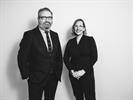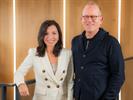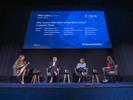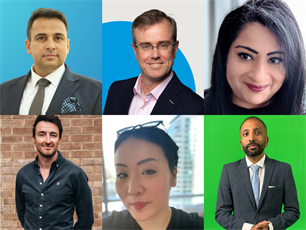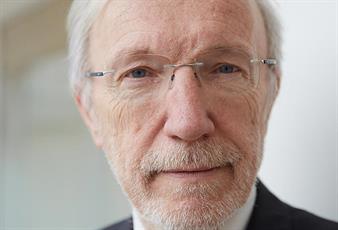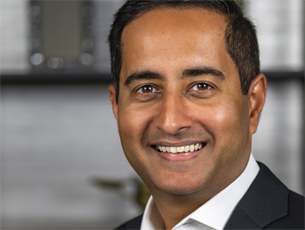Holmes Report 17 Aug 2011 // 11:00PM GMT
Virgin America, a small San Francisco-based domestic airline serving 14 cities, planned to expand its service by adding its first international flight. The airline and its agency, Ogilvy PR, pulled off three massively detailed special events at the inaugural flight departure and arrival cities that brought together airline media, travels and celebrities (and, of course, their entourages). The result: A star-studded international affair, leading to further expansion to other cities – even in a down economy.
Opportunity/Challenge: Since its launch in 2007, Virgin America, part of the Virgin Group and the only California-based airline, has dedicated itself to “making flying good again” by re-inventing air travel with new planes, attractive fares, innovative amenities and topnotch service to 14 destinations that are re-inventing air travel. When the airline announced its new international routes from Los Angeles/San Francisco to Toronto, the PR team was tasked with the challenge of creating brand awareness in a new market during one of the most turbulent economic eras for the aviation industry. Moreover, while the Virgin Group brand of more than 400 companies is well known, Virgin America is relatively unknown.
To the airline's credit, the Virgin America experience is unlike anything else in the skies with its fleetwide in-flight internet, custom-designed leather seats, power outlets, and a video touch-screen entertainment system at every seatback offering. Virgin America was entering a crowded space in which all major carriers already serviced international destinations and routes. With limited ad budgets, the public relations team would again play a critical role in amplifying brand awareness that drives top-line business growth.
Research/Planning: Our research uncovered these findings:
? Passengers wanted a flying experience that deviated from the typical domestic airline “cattle car.”
? Passengers wanted more options as far as service routes.
? Passengers needed an airline providing innovative amenities such as fleetwide in-flight internet, mood-lit cabins, power outlets, and a video touch-screen at every seatback.
In addition, the Virgin America and Ogilvy PR team used executional research from previous successful launches to strategically plan for Toronto. Key learnings from these experiences included:
• Stricter airport security regulations required securing media attendees far in advance of the actual launch date so camera crews could access the tarmac.
• To appeal to all facets of Virgin America’s media targets: Aviation, Business, Consumer, Entertainment and Tech – the event needed to include celebrities, aviation industry officials, city business leaders, social media engagement and a charity component.
• Familiarity with the local media landscape was key to generating pre-event buzz; therefore partnerships with local businesses were necessary in order to leverage their local relationships.
The team needed to study the Canadian media landscape and target key reporters, and researched opportunities there. While inaugural activities were built on a successful launch model, the Toronto plan was specifically developed to give the airline a platform to promote a larger business growth story. At that time, the airline planned to add four more cities in 2010 plus new planes and 500 new employees. The team focused its inaugural activities on a three-event program:1) an inaugural flight, 2) tarmac reception and 3) celebratory after party.
Objectives: The PR team’s objectives for launching the airline’s first international destination included:
1. Elevating and distinguishing the Virgin America brand in the mind of Canadian residents to drive sales.
2. Building awareness of the airline’s first international destination as part of its growth story by securing consistent print, online and/or broadcast coverage during the first year of the route’s operation.
3. Secure attendance by key media influentials and build awareness among top tier broadcast, print and online media in the Toronto market by garnering more than 50 local journalists at each Toronto-based inaugural event – the tarmac celebration and the post-launch VIP party.
Primary Audiences: U.S. and Canadian residents, including the core loyal followers of the brand (ages 18-45) including thousands of Virgin America's frequent flyers; the growing segment of business travelers and aspiring entrepreneurs, influentials in the airline industry, investors, and key partners; top tier business, travel and consumer media; as well as Young Entrepreneurs.
Strategic Approach: Virgin America’s public relations team promoted the Toronto launch in an overarching two-tiered strategy.
1) First, announce the new destination and ticket sales for Toronto via social media on Twitter to create buzz, without the support of traditional advertising.
2) Then, host three major launch events the first day of service at the departure gate in Los Angeles, the next stop in San Francisco, and at the destination in Toronto.
Supporting strategies included:
• Early on, engage key influential public officials to support the larger business growth story.
• Involve Sir Richard Branson, founder of the Virgin Group, to highlight the airline’s key service differentiators.
• Engage a high-profile Canadian celebrity and name the launch airplane in her/her honor.
• Harness the power of pop culture (film, music, TV, celebrity and fashion) by securing celebrities for the inaugural flight, to generate buzz and showcase the loyal celebrity following;
• Maximize earned media opportunities by offering strategic media events and targeted outreach to key media;
• Raise funds for Virgin Unite, which trains and gives seed funds to disadvantaged young people, with the “Virgin America Toronto Provocateur” contest. Winners would get a spot on the plane for the launch with a group of friends; with every entry, the airline would raise funds for Virgin Unite’s Young Entrepreneurs.
Challenges: As if it weren't complicated enough to pull off three events in three cities with sometimes demanding celebrities that all ran sequentially and on time, the tight security and regulations of the airport environment posed the greatest need for flexibility and deep breathing. For example, a last-minute change of a media attendee means more than a new name tag; it triggers numerous logistical steps that the team needed to deal with adeptly. Others:
• Trying to secure commitments to attend a two-day event from media, whose schedules change moment by moment; handling last-minute changes and security clearances
• Handling high-profile public figures, celebrities and their entourages to ensure the launch is executed smoothly.
• Dealing with scheduling conflicts posed by the G8/G20 summits, which meant trying to generate media enthusiasm for a “First Flight” that was actually six days after the inaugural flight.
Campaign Execution:
Public Official Engagement: The team secured the involvement of California Gov. Arnold Schwarzenegger and Gavin Newsom, Mayor of San Francisco, to reinforce the business story.
Celebrity Engagement: The team recruited Toronto native Drake, then the #1 music artist in North America, as primary celebrity guest, and coordinated the naming of the inaugural flight’s aircraft "‘Air Drake." Other Canadian-American stars recruited for the inaugural flight: Cheryl Burke, Dancing with the Stars; Gilles Marini, Dancing with the Stars/Brothers & Sisters; Gregory Smith, The Patriot/Rookie Blue; and Eric Roberts, The Dark Knight.
Media Engagement: The team invited key media contacts to attend and cover the launch activities occurring in three cities – Los Angeles, San Francisco and Toronto – and if possible, fly with us on the inaugural flight.
Social Media Engagement: The team would use Twitter and other tools to communicate pre-launch, from the air and after the flight.
Philanthropic Engagement: Conducted contest and invited members of Virgin Unite’s Young Entrepreneurs program onto the launch flight and encouraged them to conduct “airplane pitches” with their partners en route.
Tier One: New Route Announcement, April 20, 2010
• Development and review of press materials and distribution to key media contacts;
• Coordinated logistics for Twitter announcement and social media components including an industry first: announcing its expansion to Toronto via Twitter – without the support of traditional advertising. In the promotion, the first 500 Twitter followers who receive the airline's expansion Tweet earned a 50 percent discount on flights to Toronto.
Day of Launch Preparation (April to June, 2010)
• Developed press materials including press releases and alerts, briefing books, photographer shot sheets, celebrity tip sheets;
• Coordinated in-flight “airplane pitch” sessions to mentor aspiring entrepreneurs en route to Toronto with Sir Richard and other respected entrepreneurs from companies like Method;
• Conducted outreach to international, national and local media to secure attendance and coverage surrounding the events.
Tier Two: Day of Launch, June 29, 2010
Los Angeles Reception (Los Angeles – San Francisco), 6:30a.m.
• The day began in Los Angeles as Gov. Schwarzenegger, Sir Richard, President and CEO David Cush and a host of celebrities flew to SFO. The Governor celebrated Virgin America’s success and sustainable practices.
• The flight also served as a channel to announce Virgin America’s expanded international growth with intent to fly to Mexico. The announcement was made via Twitter from 35,000 feet leveraging Virgin America’s in-flight Wi-Fi.
• Media interviewed executives and celebrities.
San Francisco Gate Party (San Francisco – Toronto), 8:00 a.m.
• The inaugural flight touched down at SFO where media attended one-on-one briefings and a press conference with California Governor Arnold Schwarzenegger and Mayor Newsom, allowing Virgin America to capture the attention of an even larger group of home-town media.
Toronto Tarmac Reception and After Party (4:00 – 11:00 p.m.)
• As the inaugural flight crossed the border, guests and media were greeted by Canadian Mounties;
• Upon landing, Sir Richard and Cush conducted a press conference;
• Media and stakeholders toured the "Air Drake" plane and met with executives;
• CNBC conducted a live remote with host Maria Bartiromo from the tarmac on the airline’s future growth strategy.
• The evening culminated with a VIP Reception and after-party at the Thompson Hotel.
Summary of Results: Despite minimal advertising support, Ogilvy PR and Virgin America masterfully executed three launch events in three cities on the same day that were so successful, the airline was able to continue its plans to expand to four more cities.
• While sales figures are proprietary, the airline disclosed its first quarterly net profit ever and a record quarterly operating profit of $21 million (314 percent improvement year-over-year).
• Media coverage included 460,477,085 impressions and $15,165,272 in ad value to date. Highlights: In-Flight Interviews with President and CEO Cush and Sir Richard in top-tier outlets: Airlinereporter.com, AOL Small Business, CNBC, CNET, Conde Nast Traveler/ Perrin Post, CTV, Flight Global, Huffington Post; more than 179 media placements (not including pre-launch coverage) in broadcast, print and online outlets, including Billboard.com, BusinessWeek, CNBC, CNET, Extra!, The Huffington Post, MTV.com, NBC Bay Area, Perez Hilton, The Perrin Post, Rolling Stone, San Francisco Chronicle, SeattlePI.com and The Toronto Star.
The success that Ogilvy PR helped Virgin America achieve contributed to a historic third quarter. The airline celebrated these additional victories: Best Domestic Airline in Travel + Leisure’s World’s Best Awards (chosen by readers); #1 for guest experience and entertainment in 2010 APEX Passenger Choice Awards™; and Best Business/First Class for domestic airlines in Condé Nast Traveler's 2010 Business Travel Poll.


































.jpg)




